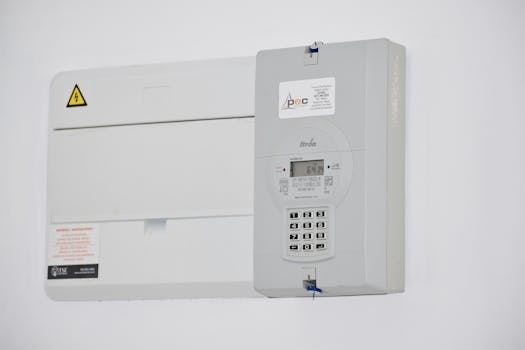Saving Strategies
Automate Savings: Effortless Strategies for Reaching Every Goal
Ready for easy wins? Learn the exact steps, tools, and real-life routines that make automating savings a breeze so you can hit your financial goals with less work and more joy.
Advertisement
Picture your savings account quietly growing in the background, no constant reminders, guilt, or forgotten transfers. When you automate savings, you let smart systems do the heavy lifting for you. Life rarely hands over extra time or energy, so letting tools streamline your finances gives you a steady edge.
Financial goals—from emergency funds to a summer vacation—become less intimidating when you set up reliable auto-deposits. Instead of scrambling to remember each month, you ensure consistent progress with just a few simple steps at the start. Automating savings isn’t only about convenience; it’s about giving yourself permission to focus on living.
This guide walks through practical strategies and tools you can put to use immediately. Whether just getting started or seeking the next level of control, you’ll find clear step-by-step approaches to automate savings, maximize results, and make your money habits nearly effortless. Let’s dig in.
Building Your Automation Foundation With Clear Goals and Triggers
Choosing a specific savings target gives your effort direction and lets you measure progress right from the start. “I want $1,000 for emergencies” works better than “save more.” The clearer the end point, the better automation works.
Banking apps and financial platforms offer features to automate savings the moment your paycheck lands or a calendar date arrives. Scheduling is easy—just tap a few options, select your account, and let it run without intervention. This foundation builds trust in automatic systems.
Establishing Realistic Goal Amounts You Can Reach
Start with a goal that fits your budget now, not your dream budget. “Save $25 a week” produces real results, while $200 might cause skipped transfers. Small, consistent amounts build habits.
Imagine a runner training for a marathon. They wouldn’t sprint day one—they build up. Approach automating savings similarly: set a starting amount, then bump it later as you get comfortable.
Print your goal and keep it somewhere visible beside your desk or mirror. This concrete reminder supports follow-through while automation handles the rest in the background.
Identifying the Best Timing Triggers For Transfers
Most people succeed with transfers aligned to payday. Choose “after paycheck posts” so you never accidentally overdraw your account. If you have biweekly pay, use the same schedule for automated savings.
Some banks allow rules like “round up every purchase” or sweep leftover checking account balances at month’s end. Test different triggers to see which feels smoothest and easiest over a few months.
If weekends cause irregular deposit timings, adjust the transfer by one business day. Consistency outpaces perfect timing—pick a repeatable rule and let the tech handle calendar quirks.
| Automation Trigger | How It Works | Best For | Key Takeaway |
|---|---|---|---|
| After Paycheck Deposit | Transfer runs the day paycheck posts | Consistent income, biweekly or monthly | Reduces risk of overspending first |
| Set Calendar Date | Transfers on a fixed date every month | Freelancers, irregular income | Keeps a regular routine |
| Transaction Round-Up | Rounds every card payment to nearest dollar; shifts change to savings | Everyday spenders | Boosts savings painlessly, little by little |
| Leftover Sweep | Transfers any checking surplus at month’s end | Those paid for bills first, save what’s left | Catches extra cash you didn’t notice |
| Goal Completion Alert | Transfers stop or switch accounts when target met | Multiple, rotating savings goals | Helps reset focus for next project |
Customizing Your Rules: Smart Adjustments For Real Life
You can fine-tune automation rules to match the giving and taking of real budgets. As life changes, adapt the system so it keeps working for you—never against you. If income changes or an unexpected need arises, adjust the settings without guilt.
Most platforms let you pause, increase, or decrease amounts instantly. That flexibility builds trust and lets you experiment without fear of mistakes derailing your momentum. Experimentation reveals your best approach for consistent savings.
Small Tweaks to Boost Confidence
Tweak your initial automated savings amount after a month. If you end up dipping into saved money to cover expenses, reduce the next cycle by 10%. This small step keeps the habit strong.
Set up account alerts for when your balance hits a new milestone. These notifications feel like rewards and give you immediate feedback—no need to log in every day. Use each alert as a cue to increase your transfer by a few dollars.
- Test lower starting amounts if money feels tight; increase incrementally for lasting habits.
- Pause automation during tight financial months; restart when steady again.
- Create separate automations for each goal to track progress more clearly.
- Link automation to a high-yield savings account to maximize interest earned.
- Use bank alerts to track transfer success instead of manual check-ins.
Guilt-free adaptation encourages experimentation. Check your automation performance every three months, then adjust the amount or frequency to fit your rhythm and any new goals.
Setting Milestones for Motivation and Progress
Break your savings goal into milestones. Mark $100, $500, then $1,000 as milestones for a $1,000 emergency fund. Hitting smaller steps feels rewarding and keeps you going.
When you automate savings for more than one goal, customize each for different timelines or priorities. For instance, automate more for an upcoming tax bill, and less for a vacation further out.
- Celebrate each milestone—send yourself a congratulatory text or share with a supportive friend.
- Adjust automation to reach the next milestone after each success.
- Use visual charts to track progress, building momentum with each step.
- Automate rewards, like shifting a small amount to spending money when hitting a milestone.
- Collect all milestones in a single document for review at year’s end; notice your patterns.
Reaching milestones isn’t about speed; it’s about consistency and enjoying the journey of hitting each step. Let milestones turn pushes into small, self-motivating wins.
Safeguarding Success: Preventing Accidental Overspending
Set up systems to protect your day-to-day finances while you automate savings. A few small tweaks prevent accidental overdrafts and reduce the temptation to dip into earmarked funds before reaching your goal.
Connect your automated savings to a specific, separate account rather than your checking. This small boundary keeps your goal money out of immediate reach yet available when you need it.
Using “Out of Sight, Out of Mind” to Stay on Track
Move savings into an account with no debit card or direct payment access. This minimizes impulse spending and delays withdrawals, making your goals easier to protect without constant willpower.
Label the account with your goal, such as “2024 Emergency Fund.” When you check your balances online, this label reinforces your commitment to let the savings build untouched.
As savings grow, increase the transfer amount in small increments of $5–$10. Watch for emotional triggers that tempt you to dip in early. Use the label as a mental speed bump.
Leveraging Transfer Schedules To Match Your Cash Flow
If rent drafts on the 1st, set automated savings for two days after your largest bills. This rule keeps your checking full when you need it, reducing stress and worry about missed obligations.
For side gigs or irregular checks, set automations as percentages rather than fixed amounts. For instance: “Save 10% of every freelance deposit.” This smooths out lean and busy months.
Document your schedule and post it somewhere visible—a calendar, phone note, or inside a kitchen cabinet. Review at the end of each pay cycle to see if adjustments help your flow.
Keeping Momentum With Visual and Social Tools
Tracking visual progress and looping in supportive people can transform saving from a lonely task to a shared adventure. Apps and old-school pen-and-paper both work—pick your favorite for real motivation boosts.
Display your progress with savings charts or tracker apps, but don’t underestimate the power of group encouragement. Telling a trusted friend about your automated savings goal can raise accountability exponentially.
Concrete Visual Tracking Strategies
Print a thermometer chart showing your goal; color in each $100 increment. Place it near your workspace and mark progress on auto-transfer days. This physical act links savings to accomplishment.
Try habit tracking apps with defaults for savings streaks. Apps can send notifications on auto-transfer days and show you weeks or months of consistency in one graph.
Stack screenshots of your progress in a dedicated photo album in your phone. Review your incremental wins any time motivation dips—increasing the likelihood you’ll keep automation active.
Rallying Support With Group Savings Challenges
Create a challenge with a friend: “First person to save $500 owes the other coffee.” Friendly bets add gentle pressure and keep savings top-of-mind, especially if motivation wavers.
Host a monthly check-in with family or online groups. Everyone can share one automated savings win and one adjustment they made that month—no number sharing required.
Post your milestones online—or in a private journal if you prefer. Treat these moments like finishing a run: savor the victory and plan the next step immediately after each finish line.
Minimizing Manual Labor and Maximizing Consistency
Once your rules run, regular check-ins and batch adjustments replace stressful manual oversight. Instead of hundreds of tiny decisions, you’ll maintain your automation with one simple review each month or quarter.
Embrace a set-it-and-review-it rhythm: check results during a pre-set time, adjust if needed, and then let the automation carry you forward. This relieves mental bandwidth for other priorities while keeping your finances on track.
Quarterly Automation Checkups For Optimal Results
Pick a recurring calendar date to review all automated savings rules. Block out 30 minutes, look for failed transfers or unnecessarily high balances in checking, and reset amounts up or down as life shifts.
Stick to the rule: if a transfer bounces, drop the amount by 15% for three months, then try increasing slowly. This micro-adjustment protects your other bills and resets momentum after setbacks.
Celebrate every successful quarter by adding a small bonus—like $10 extra to a fun account—for consistency. This self-reward signals your brain to repeat the cycle.
Batching Adjustments to Avoid Decision Fatigue
Group all savings automations in one app or spreadsheet for easy updates. Change amounts, dates, and linked goals for the next three months at once, rather than tinkering every week.
When a new financial priority arises—like a car repair—schedule the automation change during your next review instead of making a hasty adjustment. This keeps your habits steady.
Post reminders in your workspace or phone: “Batch savings updates every three months.” Each routine review carves one stone in the path to your larger savings goal.
Celebrating Wins and Resetting for New Goals
Recognize and celebrate every finished savings goal with intentional rituals. By doing so, you reinforce positive feelings about automation and naturally prepare for the next target—without frustration or fatigue.
Build reset rituals: when you reach a goal, pause, reflect, and thank yourself before starting a new savings cycle. This habit links enjoyment to automation, not just obligation.
Intentional Rewards to Reinforce Savings Success
Plan a small splurge—like a favorite meal or day trip—immediately after meeting a savings milestone. Record the celebration in your journal to capture the memory and link it to automate savings habits.
Tell someone about each completed goal in person or via message. Speaking your success aloud encourages the belief that you can do it again and again, making automation self-perpetuating.
Write a list of three positive outcomes from your latest automated savings win. Focus on what worked, note one tweak for next time, and give yourself permission to feel proud.
Resetting Goals Without Losing Momentum
When a goal is finished, set the next automation rule before pausing. If you saved for a vacation, shift the transfer to a “home repairs” bucket instead of stopping altogether. Consistency compounds results.
Keep each goal’s label and notes in a folder to review at year’s end. Seeing completed targets resets your motivation for the next challenge and prevents backsliding into manual savings.
Treat each reset as a new journey—update your chart, refresh your account labels, and invite someone to hold you accountable. This makes each saving season a chance to learn and grow.
Carrying Out Effortless Saving—Your Next Action Steps
With automation, every step is designed to move you closer to smarter, more consistent savings. The practical examples in this guide offer a toolkit for using technology—and a few old-school tricks—to automate savings and streamline your journey.
No single tool or routine fits everyone. Experiment often, check in on your progress, and choose only the rules and rituals that make the process feel nearly effortless. Small tweaks along the way strengthen your commitment and results.
By treating your automated savings as a living system you revisit and adjust, you transform both your money and your confidence. Start this week, celebrate small wins, and watch your financial health steadily flourish.
Frequently Asked Questions
How do I choose the right amount for automated savings?
Start with an amount you won’t miss or need for bills. $5 or $25 per pay period works. Adjust upward as your budget permits, and always revisit quarterly to align with your situation.
What if I have irregular income?
Set savings as a percentage of each deposit, not a fixed dollar amount. After each paycheck—no matter how large or small—automate a chosen percentage into your savings account for predictable results.
Can I pause automation during financial hardship?
Yes, most banks and apps let you pause, reduce, or skip transfers. Don’t delete the rule entirely—restart as soon as possible to keep your habit and goal visible.
Is it safe to connect automations to my main checking account?
Link savings rules to an external account, if possible, to reduce impulse withdrawals. This boundary helps keep your savings shielded from daily transactions, safeguarding your progress effortlessly.
How do I stay motivated if results are slow?
Break goals into small milestones, celebrate each with a ritual or reward, and track your progress with visual tools. Share your achievements with a trusted friend for accountability and inspiration to keep going.





